Building homes for bats in the prairies
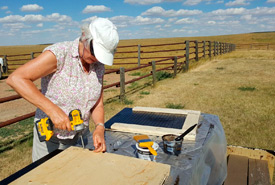
Conservation Volunteers from across Saskatchewan joined together to build bat boxes. (Photo by NCC)
Every year, the Nature Conservancy of Canada's (NCC's) Saskatchewan Region holds a Conservation Volunteers event at its Old Man on His Back Prairie and Heritage Conservation Area (OMB). This year, one of the activities involved building bat boxes to put up at OMB and on other NCC properties across Saskatchewan.
Bats are secondary cavity users, which means they don’t excavate their own cavities for shelter and nests, but instead use those created by other animals (usually woodpeckers). Cavities are often a hot commodity, with stiff competition for prime holes and hollows, as many species of birds and mammals use them for nesting or roosting, but don’t create them themselves. Bat boxes function like a naturally occurring cavity, providing a cozy, safe spot for bats to roost and/or leave their young when they go foraging. However, the advantage of a bat box is that, by design, only bats can use them.
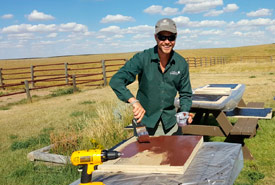
It's important to use stain on the inside parts of the box. This ensures that the bats will be able to move around the box with ease. (Photo by NCC)
So, what makes a good bat box?
A good bat box should be fairly large (at least 24 inches tall with an internal chamber at least 20 inches tall and 14 inches wide), with a three- to six-inch-wide landing area. The internal surfaces should be roughened to provide traction and grip for the bats and should be coated with a dark, water-based stain. Stain is preferred for the interior over paint because paint fills the grooves and scratches created for traction. The exterior should be painted a dark colour to help the bat box retain heat throughout the night.
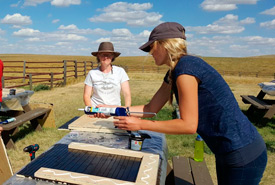
Caulking the edges of the box ensures no water gets in and no heat escapes. (Photo by NCC)
It’s also good practice to use screws rather than nails, and to caulk all seams before and, if necessary, after joining the walls, roof and floor. These measures increase the longevity of the bat box and will help prevent crevices where water could seep in or heat could escape.
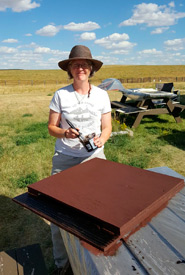
A volunteer with a nearly finished bat box. (Photo by NCC)
Now that you’ve constructed the finest bat box that should meet all the needs of your friendly, neighbourhood bats, you’ll need to hang it. Where is a good place to hang a bat box and how high should it be? Bat boxes should be mounted 12 to 20 feet above ground, on either a building or a pole in a location with lots of sun during the day and minimal light overnight. For example, a good spot to place a bat box is the south side of a building (such as a house, barn or garage), away from external light sources.
The bat boxes constructed at the OMB volunteer weekend were based on plans from Bat Conservation International, and followed the criteria outlined above. A total of 12 bat boxes were constructed by a team of enthusiastic, dedicated volunteers.
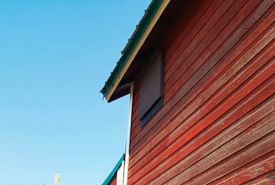
An installed bat box (Photo by NCC)
NCC was fortunate to have bat expert Joseph Poissant attend the event. He brought along some acoustic sampling equipment, which he set up in the yard near the barn. The equipment recorded echolocation calls made by the bats, and provided a measure of bat activity in the area over the course of the night.
Results from the recorder indicated the presence of four species of bats: migratory silver-haired and eastern red bats, big brown bats and the federally endangered little brown bat. This was a very exciting discovery and a perfect conclusion for OMB’s bat box building adventure!


